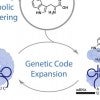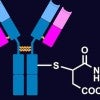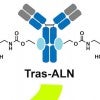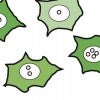
Rice lands grant to improve time-release drugs
HOUSTON – (Sept. 21, 2021) – Time-released drugs are about to get a geometry lesson, thanks to bioengineers at Rice University.

Rice lands grant to improve time-release drugs
HOUSTON – (Sept. 21, 2021) – Time-released drugs are about to get a geometry lesson, thanks to bioengineers at Rice University.

NIH funds effort to customize treatment of movement impairments
Existing treatments for movement impairments are “off the rack” rather than “custom-tailored,” but B.J. Fregly, a Rice University professor of mechanical engineering and bioengineering, wants to change that situation.

Rice lab dives deep for DNA’s secrets
Structural biologist Yang Gao receives a five-year National Institutes of Health grant to detail how complex protein chains replicate DNA and fix errors on the fly. What they find could help treat genomic disease, including cancer.

CPRIT grant establishes Genetic Design and Engineering Center
Rice faculty members led by bioengineer Gang Bao have been awarded a $4 million CPRIT grant to establish the Genetic Design and Engineering Center.

Programmed bacteria have something extra
Rice chemists expand genetic code of E. coli to produce 21st amino acid, giving it new abilities.

Targeted tumors attack not-innocent bystanders
Antibody-drug conjugates developed are found to attack not only targeted tumor cells but also nontargeted “bystanders.”

Drug doubles down on bone cancer, metastasis
Researchers at Rice University and Baylor College of Medicine develop an antibody conjugate called BonTarg that delivers drugs to bone tumors and inhibits metastasis.

Cell-wrangling circuit simplifies genetic experiments
A Rice alumnus' work pays off with The Equalizer, a synthetic circuit that assures consistent gene expression in laboratory-bred colonies.

NIH grant will help streamline chemical synthesis
Rice University chemist Julian West has won a five-year, $1.8 million National Institutes of Health grant to advance his lab’s efforts to simplify the synthesis of organic chemicals.

Bioengineering department adds single-cell expert via CPRIT grant
The little things of life mean a great deal to Julea Vlassakis, who will bring her study of protein complexes and their role in cancer proliferation to Rice University this year.

Feds back probe of understudied gut nervous system
Rice University neurobiologist Rosa Uribe has won a five-year, $2 million R01 grant from the National Institutes of Health to study how the enteric nervous system develops.

B.J. Fregly, a professor of mechanical engineering and bioengineering and a CPRIT Scholar in Cancer Research, has been named a fellow of the American Society of Mechanical Engineers (ASME).

Rice, Baylor part of research effort to advance genome editing
Researchers from Rice University and Baylor College of Medicine are part of a national effort to accelerate genome-editing research and develop gene-editing technologies and therapies.

Cancer ‘guardian’ breaks bad with one switch
A mutation that replaces a single amino acid in a potent tumor-suppressing protein makes it prone to nucleating amyloid fibrils implicated in many cancers as well as neurological diseases.

Cerium sidelines silver to make drug precursor
Rice scientists have developed a simplified method to make fluoroketones, a drug precursor that typically requires an expensive silver catalyst.